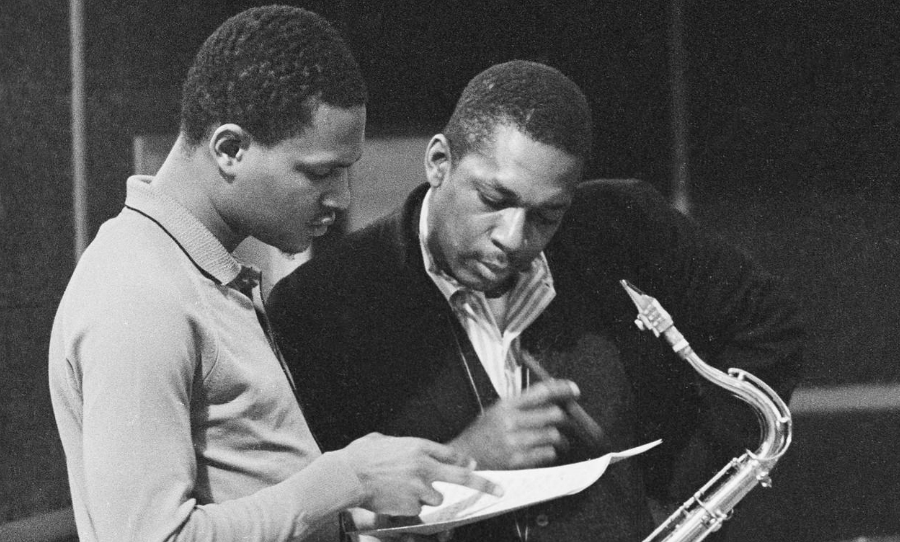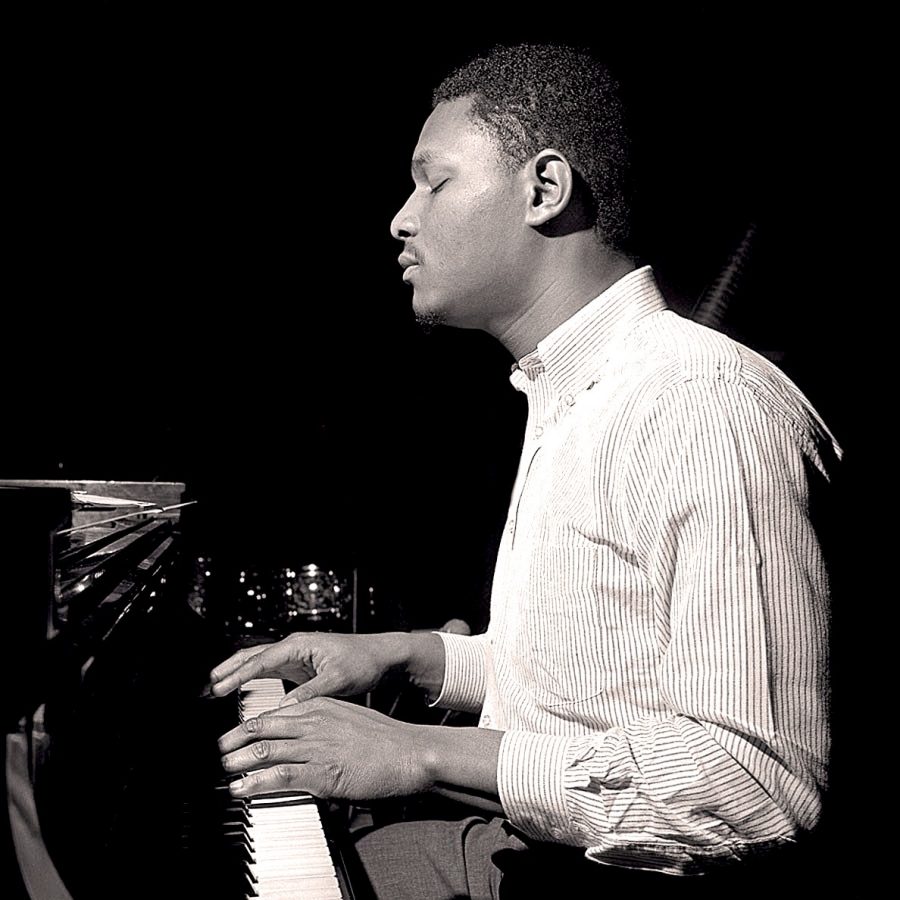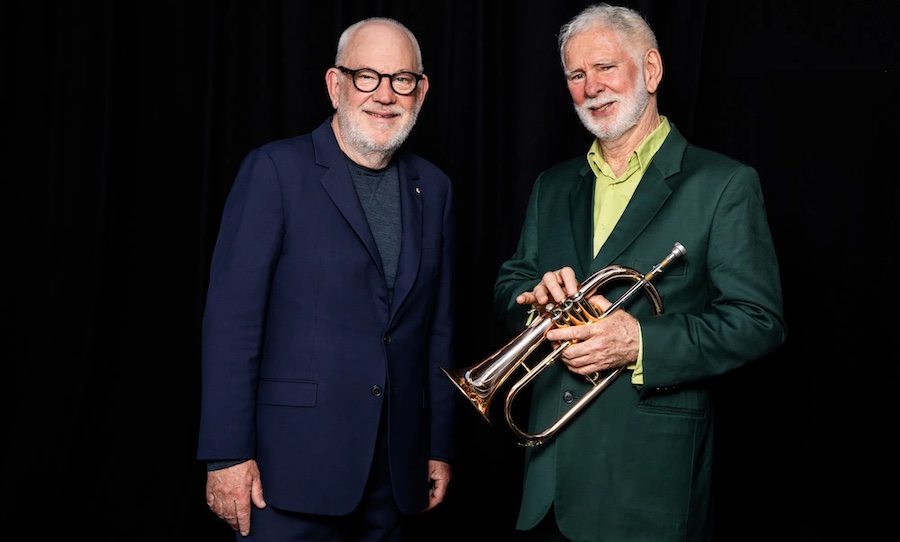The mind-bending virtuosity and granite-like chordal work of McCoy Tyner influenced almost every pianist in jazz. His time in the legendary John Coltrane Quartet has forever left its imprint on the collective consciousness of music and a smoking crater in the wake of his death on Friday, March 6th at age 81.
While his story is often told through the lens and shadow of Coltrane’s legacy, Tyner’s time after Coltrane’s passing is no less impressive. As a bandleader and composer, Tyner’s sound and style made him a game-changing catalyst in jazz and beyond.
Here are his 5 most important contributions to the narrative of jazz as we reflect on the life and legacy of five-time Grammy winner McCoy Tyner.

The deep resonance, hammering attack, and harmonic invention of McCoy Tyner are sublime, unique and absolutely first tier.
Craft and Coltrane
Tootie Heath remembers a day Lee Morgan appeared at school in 1951. Although Morgan was a few years younger than Tootie, the future trumpet legend was precocious and ever-searching for new local talent on the streets of Philadelphia. Morgan walked Tootie a few blocks South to a beauty salon. In the back of the joint was a kid Morgan’s age playing the piano. He was allowed to practice there because his mother owned the salon. Morgan and Tootie heard the torrents of keyboard pealing through the doorway, looked at each other and said, “Wow!”
Alfred McCoy Tyner was born Dec 11, 1938, in Philadelphia. The oldest of three, he began taking piano lessons at age 13 and was heavily inspired by Thelonious Monk. In fact, Tyner talked about Monk and Bud Powell at high school so much that his friends called him ‘Bud-Monk’.
John Coltrane and McCoy Tyner began practising together in the mid-50s and two years later Tyner was in the band. Popular convention suggests that Tyner was Coltrane’s disciple, and he largely was, though he also gave a lot back to Coltrane. In one interview with Bob Dawbarn, Coltrane said, “Tyner plays some things on the piano, but I don’t know what they are.” For his big band album Africa/Brass, John told his arranger, avant-garde pioneer, Eric Dolphy to get the voicings from Tyner.
Here lies the key to Tyner’s genius. He stacked chords in fourths. Lacking a third, fourth chords have a mysterious intrigue, refusing to commit to a major or minor. Tyner has said that Debussy and Stravinsky were two of his favourite composers, both frequent users of the fourth. His cascading clusters in the right was allowed him to imply harmonic clarity that his left hand eschewed. Furthermore, his bell sounds were the perfect accompaniment to Coltrane’s waterfall passages.
Now let’s dive into the albums that crown the career of McCoy Tyner, and solidify him as a key player in jazz to this day.
5. The Real McCoy (1967)
The first of seven albums McCoy Tyner would record for Blue Note, this is undoubtedly his most highly favoured LP. All of its five tunes have become standards amongst jazz pianists.
The hot-blooded opening track Passion Dance, highlights Tyner’s intricate melodies with Joe Henderson’s tenor sax. Blues ballad Contemplation follows and it’s pure emotive bliss. A joy cover to cover and the production from Alfred Lion at Van Gelder Studio is the icing on the cake.
4. Wayne Shorter – Juju (1965)
As an A-list accompanist after his time with Coltrane, tenor saxophonist Wayne Shorter enlisted Tyner on a quick succession of Blue Note sessions in the mid-’60s. One of the said sessions yielded Juju which quickly became a jazz classic.
Joined by Elvin Jones on drums and former Coltrane associate Reggie Workman on bass, Tyner’s stamp is noticeable from the first downbeat of the album’s opener. Shorter’s own unique voice casts a different perspective on the polyrhythmic structures of McCoy and Jones.
3. A Love Supreme – John Coltrane (1965)
On John Coltrane’s magnum opus, the legendary ensemble drove modal complexity to devotional extremes. With the left hand, Tyner compiled intervals of harmonic fourths creating a sense of openness in his playing. In his right hand, he worked his lightning precision, sculpting grand phrases with a clarity that is wholly his own.
Rather than unfolding extended droning phrases or modal eruptions, as Coltrane often did, Tyner insists on compact, lyrical melodies that ripple out with a crystalline touch. This was a landmark album for fearsome intensity that raised the bar for jazz, of which Tyner was now a key player.
2. Enlightenment (1973)
Throughout the ’70s, hard bop was in decline and Tyner continued to expand his ambitions as a composer, allowing his piano to forge more room for the influence of avant-garde.
This lengthy live album was recorded at the Montreux Jazz Festival in Switzerland and Tyner is in peak form. There are more than a few jaw-dropping moments here as Tyner begins and ends solos with dazzling polyphony, flying through lines at hyperspeed.
1. My Favourite Things – John Coltrane (1961)
At the tender age of 21, McCoy Tyner joined the famed quartet of his longtime friend John Coltrane – almost an older brother figure from his teenage years in Philadelphia. By this time, Coltrane had largely exhausted his fascination with corkscrewing harmonies and had grown to envelope more chanting world music, a precursor to his spiritual devotion on A Love Supreme.
All of a sudden Tyner’s piano was on airwaves around the world, sparring with the drums of Elvin Jones – another musical relationship that saw great success. Tyner’s playing throughout My Favourite Things is more disciplined than his later efforts but no less thrilling as you witness the shadings of greatness on the cusp.



